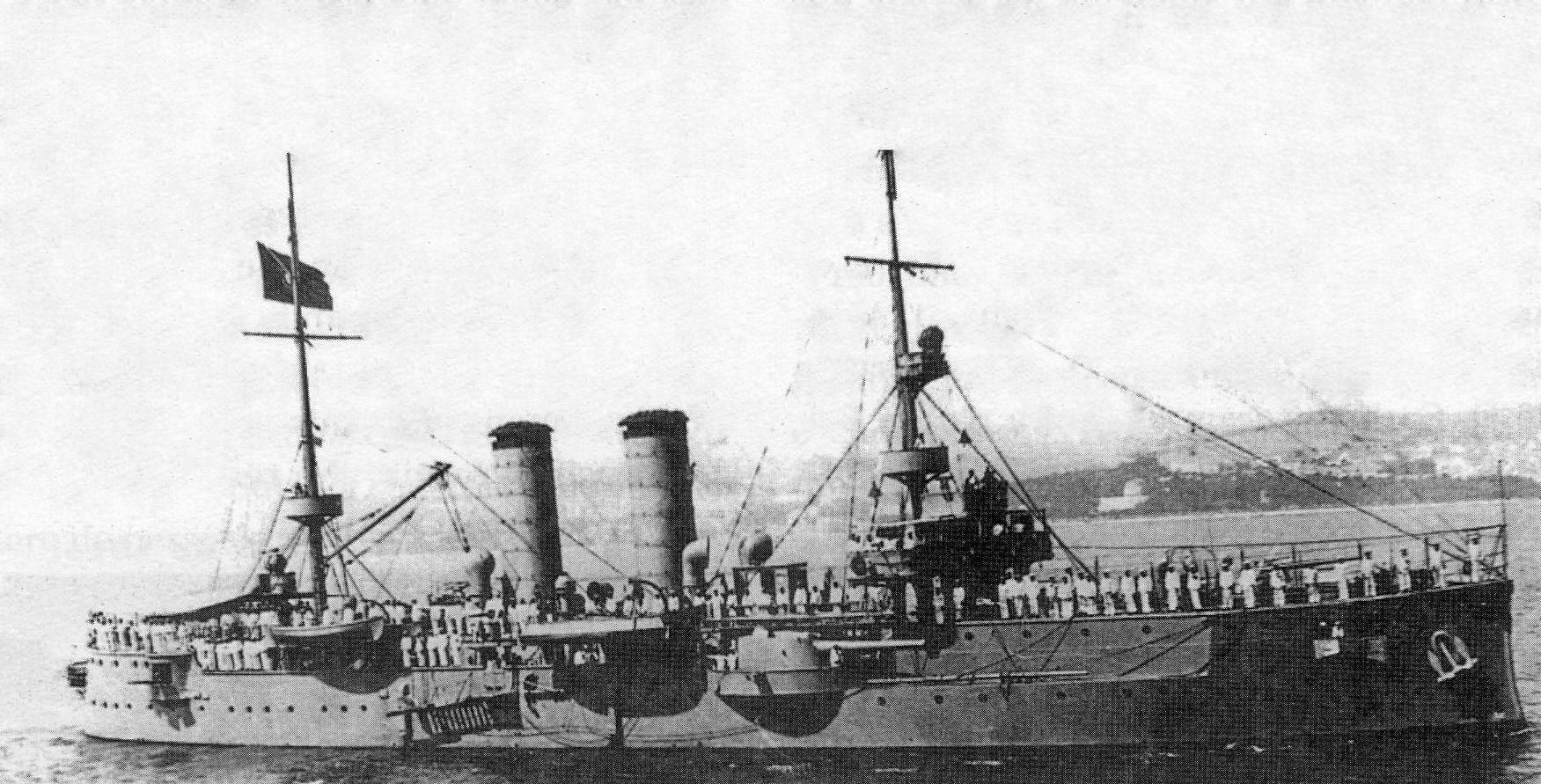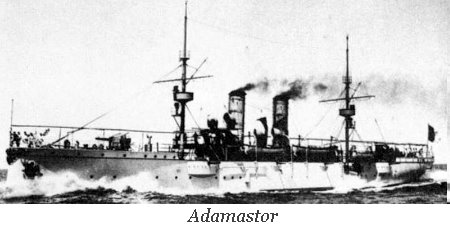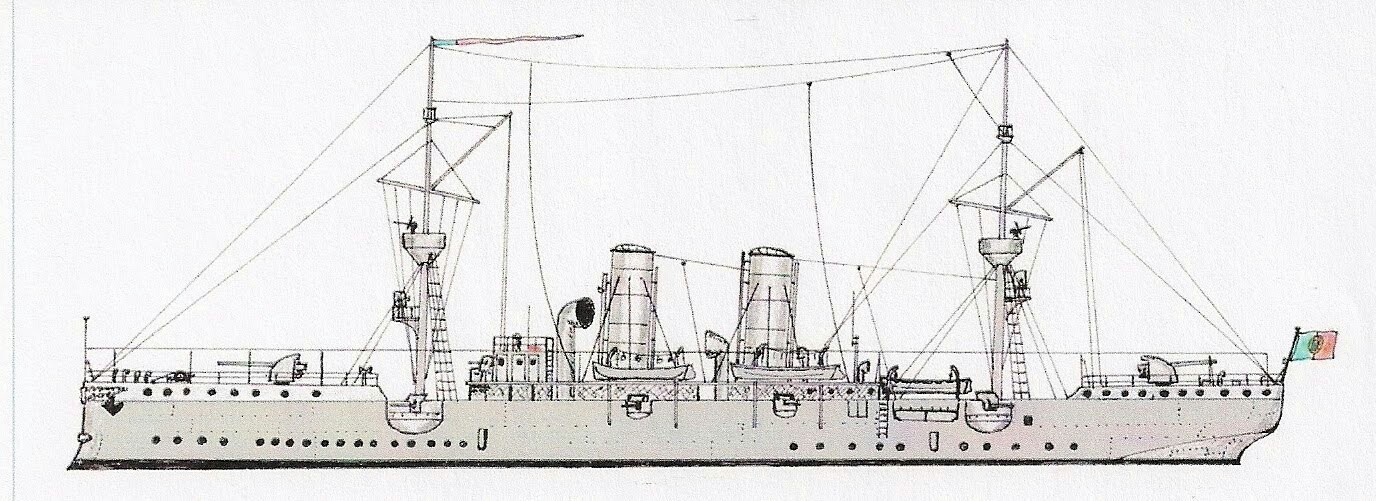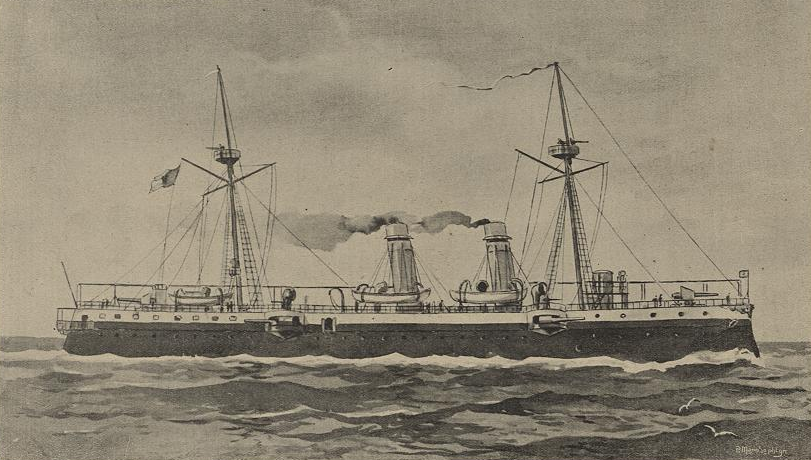 The Portuguese Navy in WW1
The Portuguese Navy in WW1
Pre-1914 Portugal was a troubled country emerging just from a revolution: The partition of the former Portuguese colonial empire in Africa being shared between England and Germany since the Berlin Treaty in 1878, and the alliance with England reactivated with the treaty of Windsor in 1899. The discredited monarchy ended in 1908 with the assassination of Don Carlos I, followed by a violent revolution which led in 1910 to the accession to the throne of the house of Braganza, and Manuel II, with the promise of a parliamentary monarchy. But the new monarchy was soon corrupt and unpopular. The clashes were violent between Socialist Republicans and Royalists, and the Navy played its role in particular during the bombing of Lisbon. The crews were overwhelmingly in favor of the republic. The latter was proclaimed on October 5, 1910.

Coastal Battleship Vasco Da Gama
⚠ Note: This post is in writing. Completion expected later in 2024.
❯❯❯❯❯❯❯❯❯❯❯
Republicans being a little more concerned with the well-being of the people than the ancient monarchy of past glories, the ambitious naval program of 1890 was abandoned. Moreover, the civil war had emptied the state coffers. The plan of 1907, relatively modest, but still providing 2 battleships and 6 cruisers, was not approved for lack of funds. But soon the ambition to recover colonial territories in the face of the pretensions of Germany in particular made approve a new large-scale plan in 1912: Three dreadnought battleships of the Minas Gerais type, 3 cruisers, and light buildings. It was reduced in 1913 to 2 cruisers, 6 destroyers and 3 submersibles, built mostly in Great Britain. The war made them requisition. Also it is with forces relatively obsolete for the essential that Portugal went to war:
1 Coastal Battleships: The Vasco da Gama (1875).
4 Cruisers: Adamastor, Sao Gabriel, Dom Carlos I and Rainha Dona Amelia (1896-99).
3 Destroyers: 2 class Guadina (1911 – 2 others under construction in Lisbon), Tejo (1901). The Liz ordered in Italy, was requisitioned by the English and became the HMS Arno.
4 Torpedo Boats: No. 1 to 4 (1881-86).
1 submersible: Espadarte (1912).
24 Miscellaneous: Avisos Rainha de Portugal (1875) and Alfonso d’Albuquerque (1884), 2 gunboats class Rio Lima (1875), 2 class Lurio (1907), 2 Class Beira (1910, 3 others in 1917), Zambese (1886) ), Zaire (1884), Diu (1889), Limpopo (1890), Dom Luiz (1895), Patria (1903), 5 river gunboats class Cacheu (1902), Macau (1909), Flexa (1909). Patrolmen Dili, Lince (1911), aviso and yacht of Admiralty Cinco de Octubre (1900).
Tonnage 1914:
Armored Coast Guard: 1 – Cruisers; 4 – Destroyers: 3 – Raiders: 4 – Submersibles: 1 – Various: 24


Cruiser Adamastor
The Portuguese Navy during the First World War:
In fact, Portugal began to undertake military operations in Africa directed against the Germans and to attack German commercial traffic in the area. The war was an opportunity to recover ancient territories and settlements. But the official declaration of war awaited March 1916. An important Portuguese expeditionary force set out to fight on the northern front at Loos in 1916, but in Africa, the German counter-offensive forced the Mozambique border. At sea a duel of artillery took place between the gunboat Augusto de Castillo escorting a liner and the U139 that commanded the Lothar von Arnaud of the Pierière. The latter was a trawler (Elite) requisitioned in 1917 and armed with a 65 mm gun and a 47 mm. The U139 was a submersible cruiser armed with 2 pieces of 150 mm. The fight for honor led to the destruction of the courageous escort who sank on 14 October 1918. Other buildings were requisitioned, such as the auxiliary cruiser Pedro Nunez, the Sado II minesweeper, and the Açor gunboat. In 1918, the Tete River gunboat Tete was also deployed on the Zambeze.

Cruiser Rainha Dona Amélia
The Portuguese military ports were Lisbon, with large dry docks, foundries and asenaux, but also Luanda in Angola, Lourenço Marques in Mozambique, and Port Delgado in the Azores, equipped with coastal batteries. The latter served as a transit base for US transport to Europe. In exchange for its commitment to the allies, Portugal received from Germany war reparations to the Versailles treaty and a piece of territory in northern Mozambique belonging to the German colony. She also received six ex-Austro-Hungarian torpedo boats and a Turkish gunboat.

 Latest Facebook Entry -
Latest Facebook Entry -  X(Tweeter) Naval Encyclopedia's deck archive
X(Tweeter) Naval Encyclopedia's deck archive Instagram (@navalencyc)
Instagram (@navalencyc)





 French Navy
French Navy Royal Navy
Royal Navy Russian Navy
Russian Navy Armada Espanola
Armada Espanola Austrian Navy
Austrian Navy K.u.K. Kriegsmarine
K.u.K. Kriegsmarine Dansk Marine
Dansk Marine Nautiko Hellenon
Nautiko Hellenon Koninklije Marine 1870
Koninklije Marine 1870 Marinha do Brasil
Marinha do Brasil Osmanlı Donanması
Osmanlı Donanması Marina Do Peru
Marina Do Peru Marinha do Portugal
Marinha do Portugal Regia Marina 1870
Regia Marina 1870 Nihhon Kaigun 1870
Nihhon Kaigun 1870 Preußische Marine 1870
Preußische Marine 1870 Russkiy Flot 1870
Russkiy Flot 1870 Svenska marinen
Svenska marinen Søværnet
Søværnet Union Navy
Union Navy Confederate Navy
Confederate Navy Armada de Argentina
Armada de Argentina Imperial Chinese Navy
Imperial Chinese Navy Marinha do Portugal
Marinha do Portugal Mexico
Mexico Kaiserliche Marine
Kaiserliche Marine 1898 US Navy
1898 US Navy Sovietskiy Flot
Sovietskiy Flot Royal Canadian Navy
Royal Canadian Navy Royal Australian Navy
Royal Australian Navy RNZN Fleet
RNZN Fleet Chinese Navy 1937
Chinese Navy 1937 Kriegsmarine
Kriegsmarine Chilean Navy
Chilean Navy Danish Navy
Danish Navy Finnish Navy
Finnish Navy Hellenic Navy
Hellenic Navy Polish Navy
Polish Navy Romanian Navy
Romanian Navy Turkish Navy
Turkish Navy Royal Yugoslav Navy
Royal Yugoslav Navy Royal Thai Navy
Royal Thai Navy Minor Navies
Minor Navies Albania
Albania Austria
Austria Belgium
Belgium Columbia
Columbia Costa Rica
Costa Rica Cuba
Cuba Czechoslovakia
Czechoslovakia Dominican Republic
Dominican Republic Haiti
Haiti Hungary
Hungary Honduras
Honduras Estonia
Estonia Iceland
Iceland Eire
Eire Equador
Equador Iran
Iran Iraq
Iraq Latvia
Latvia Liberia
Liberia Lithuania
Lithuania Mandchukuo
Mandchukuo Morocco
Morocco Nicaragua
Nicaragua Persia
Persia San Salvador
San Salvador Sarawak
Sarawak Uruguay
Uruguay Venezuela
Venezuela Zanzibar
Zanzibar Warsaw Pact Navies
Warsaw Pact Navies Bulgaria
Bulgaria Hungary
Hungary

 Bundesmarine
Bundesmarine Dutch Navy
Dutch Navy Hellenic Navy
Hellenic Navy Marina Militare
Marina Militare Yugoslav Navy
Yugoslav Navy Chinese Navy
Chinese Navy Indian Navy
Indian Navy Indonesian Navy
Indonesian Navy JMSDF
JMSDF North Korean Navy
North Korean Navy Pakistani Navy
Pakistani Navy Philippines Navy
Philippines Navy ROKN
ROKN Rep. of Singapore Navy
Rep. of Singapore Navy Taiwanese Navy
Taiwanese Navy IDF Navy
IDF Navy Saudi Navy
Saudi Navy Royal New Zealand Navy
Royal New Zealand Navy Egyptian Navy
Egyptian Navy South African Navy
South African Navy






























 Ukrainian Navy
Ukrainian Navy dbodesign
dbodesign